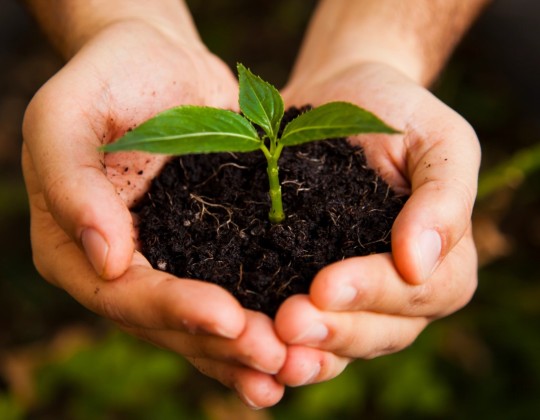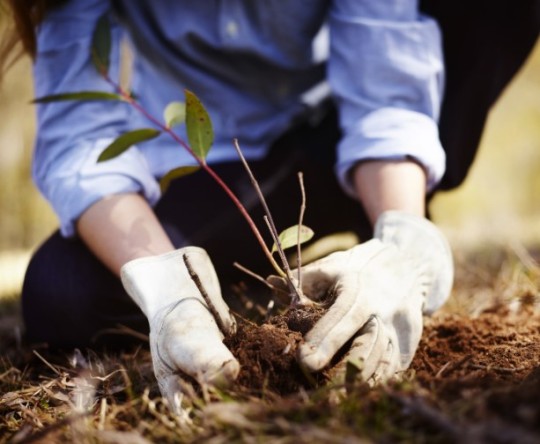#EcosystemManagement
Explore tagged Tumblr posts
Video
youtube
Measuring ecosystem performance for business resilience | Nature Is e105...
#youtube#environmental monitoring#EcosystemPerformance#BusinessResilience#EcosystemManagement#EnvironmentalImpact
0 notes
Text

People with this diploma contribute to the preservation and maintenance of wildlife and their habitat in the natural ecosystem, parks and reserves. For #DiplomaOfConservationAnd #EcosystemManagement, visit: https://aro.edu.au/course/ahc50422-diploma-of-horticulture-management/
0 notes
Text
The Role of Mycorrhizal Fungi in Plant Ecosystems
https://supedium.com/ecosystem-and-environment/the-role-of-mycorrhizal-fungi-in-plant-ecosystems/ #biodiversity #EcosystemManagement #Fungalinoculants #Mycorrhizae #Nutrientuptake #soilhealth The Role of Mycorrhizal Fungi in Plant Ecosystems https://supedium.com/ecosystem-and-environment/the-role-of-mycorrhizal-fungi-in-plant-ecosystems/
0 notes
Text
"Drone-Based Wildlife Conservation: Protecting Nature with Technology 🦋, $3.5 Billion Market by 2034"
Drone-Based Wildlife Conservation market leverages unmanned aerial vehicles (UAVs) to safeguard and monitor wildlife. Equipped with advanced imaging technologies, data analytics software, and real-time tracking systems, these drones offer innovative solutions for habitat mapping, anti-poaching, and population assessments. This technology enhances biodiversity protection and promotes sustainable ecosystem management.
To Request Sample Report: https://www.globalinsightservices.com/request-sample/?id=GIS10939 &utm_source=SnehaPatil&utm_medium=Article
Driven by technological advancements and growing environmental consciousness, the market is expanding rapidly. The surveillance and monitoring sub-segment leads, with drones’ precision and efficiency in covering vast areas. Habitat mapping follows closely, fueled by the demand for detailed ecological data to guide conservation strategies.
Market Segmentation:
Type: Fixed-wing, Rotary-wing, Hybrid Drones
Products: Camera, Sensor, Mapping, Surveying Drones
Services: Monitoring, Data Analysis, Consultation, Training
Technology: Autonomous, Semi-autonomous, Remote-controlled, AI-powered Drones
Components: Propulsion, Navigation, Communication Systems, Power Supply
Applications: Wildlife Tracking, Habitat Mapping, Poaching Prevention, Biodiversity Assessment
End Users: Government Agencies, NGOs, Research Institutions, Wildlife Reserves
Functionality: Daytime, Nighttime Monitoring, Weather-resistant, Long-range Drones
Deployment: On-ground, Aerial, Marine
In 2023, the market deployed approximately 1.2 million drones, with projections reaching 2.5 million by 2033. Habitat monitoring holds the largest market share at 45%, followed by anti-poaching at 30%, and species tracking at 25%. This growth is supported by increasing environmental awareness and advancements in drone technology. Leading companies like DJI, Parrot SA, and AeroVironment Inc. drive the market, with DJI focusing on innovation and Parrot SA on AI integration.
Competitive dynamics are influenced by strategic initiatives and regulatory frameworks, such as the U.S. Federal Aviation Administration’s drone usage guidelines and international wildlife protection laws. The market is expected to grow at a 15% annual rate, driven by AI advancements and conservation efforts. Future opportunities lie in remote monitoring and real-time data analytics, despite challenges like regulatory compliance and operational costs.
#DroneConservation #WildlifeProtection #EcoTech #Biodiversity #SustainableConservation #AntiPoaching #HabitatMapping #AIinDrones #ConservationTech #EnvironmentalMonitoring #UAVforGood #DroneTechnology #SpeciesTracking #EcosystemManagement #RemoteMonitoring #WildlifeSurveillance #InnovativeConservation #EcoFriendlyTech #DataDrivenConservation #TechForWildlife
0 notes
Text

Alkalinity
Alkalinity refers to the capacity of a water body or solution to neutralize acids, often measured by the concentration of bicarbonates, carbonates, and hydroxides. It plays a crucial role in maintaining pH stability in aquatic ecosystems, water treatment processes, and soil health. High alkalinity acts as a buffer, preventing drastic pH fluctuations that could harm living organisms or disrupt chemical processes. Conversely, low alkalinity may lead to acidification, which can adversely affect environmental and industrial systems.
International Chemistry Scientist Awards
Website: chemistryscientists.org
Contact us: [email protected]
Nominate now: nominate here
#sciencefather#researchawards#Professor,#Lecturer,#Scientist,#Scholar,#Researcher #Alkalinity #WaterQuality #pHBalance #EnvironmentalScience #WaterTreatment #SoilHealth #AcidNeutralization #EcosystemManagement #Sustainability #ChemistryInsights
1 note
·
View note
Text
Streamlining Partner Management with Ecosystem Platforms
Partner Ecosystem Platform Software facilitates collaboration and relationship management within business ecosystems, enabling organizations to efficiently engage with partners, suppliers, and customers.
This software streamlines partner onboarding, communication, and joint project management, fostering innovation and driving mutual growth. By providing a centralized hub for sharing resources, knowledge, and data, it enhances transparency and alignment across diverse stakeholders. Partner Ecosystem Platform Software supports the development of strategic partnerships, enabling organizations to leverage complementary strengths and expand market reach. It also includes features for performance tracking, incentive management, and analytics, empowering businesses to optimize partner relationships and drive measurable outcomes. As digital ecosystems continue to evolve, this software plays a crucial role in orchestrating seamless collaboration and driving collective value creation across interconnected networks.
#PartnerEcosystem #EcosystemSoftware #BusinessCollaboration #DigitalTransformation #PartnershipManagement #InnovationHub #CollaborativeEconomy #StrategicPartnerships #EcosystemManagement #BusinessGrowth #DigitalPlatforms #CollaborationTools #JointProjectManagement #PerformanceTracking #DataAnalytics #MutualGrowth #ValueCreation #BusinessAgility #PartnerOnboarding #EcosystemIntegration
0 notes
Text
Climate Change and bio-diversity| Yuva Rural Association (YRA)
Major environmental challenges facing society include climate change, hazardous substances and loss of biodiversity. YRA facilitates the development of knowledge and technology for restructuring towards sustainability, climate change adaptation & mitigation, environment-friendly energy and long-term preservation of well-functioning ecosystems.

#rural&tribaldevelopment#helpingpeople#yraindia#YuvaRuralAssociation#ruraldevelopmentngo#tribalsocietyngo#ruralsocietyngo#ecosystemmanagement#ruralclimatechange#biodiversity
1 note
·
View note
Video
youtube
Measuring ecosystem performance for business resilience | Nature Is e105...
#youtube#EcosystemPerformance#BusinessResilience#NatureIs#KevinHalsey#E105#EcosystemManagement#Sustainability#EnvironmentalImpact#CorporateResponsibility#Biodiversity#GreenBusiness#EnvironmentalManagement#EcoFriendly#SustainableDevelopment
0 notes
Text

🌿 Unlock Your Passion for the Environment with Certificate III in Conservation and Ecosystem Management! 🌎
Are you passionate about preserving our planet? Dream of making a significant impact on our ecosystems? 🌱 It's time to turn your green dreams into reality!
Introducing the Certificate III in Conservation and Ecosystem Management - your first step towards a fulfilling career in environmental conservation. 📚
What Will You Learn?
✅ Ecosystem Conservation - Techniques to protect, restore, and manage ecosystems. ✅ Wildlife Management - Skills to support and manage wildlife populations sustainably. ✅ Plant Identification - Understanding diverse plant species and their roles in ecosystems. ✅ Sustainable Practices - Implementing eco-friendly strategies for conservation efforts.
Why Choose This Course?
✅ Hands-On Experience - Engage in real-world conservation projects. ✅ Expert Instructors - Learn from seasoned professionals in the field. ✅ Career Opportunities - Open doors to roles in wildlife parks, conservation areas, and environmental agencies.
🌟 Whether you're aiming to kickstart your career or looking to contribute to conservation efforts, this course is your gateway to making a difference. Join a community of like-minded individuals, learn from the best, and become a steward of the earth.
👉 Enroll Now! Spaces are limited. Secure your spot today and take the first step towards a greener future.
📲 For more information, visit our website or contact us at https://aro.edu.au/contact-us.
#conservation#ecosystemmanagement#greencareers#sustainablefuture#enrolltoday#certificateIIIinconservationandecosystemmanagement#conservationandecosystemmanagement
0 notes
Text
Ecosystem Management in Protected Areas
https://supedium.com/ecosystem-and-environment/ecosystem-management-in-protected-areas/ #adaptivemanagement #Biodiversityconservation #EcosystemManagement #EcosystemServices #habitatrestoration #protectedareas Ecosystem Management in Protected Areas https://supedium.com/ecosystem-and-environment/ecosystem-management-in-protected-areas/
0 notes
Link
0 notes
Text
Algal Pathogens: Threats to Aquatic Life
https://supedium.com/phycology/algal-pathogens-threats-to-aquatic-life/ #Algalpathogens #AquaticLife #Cyanobacteria #EcosystemManagement #HarmfulAlgalBlooms #Waterquality Algal Pathogens: Threats to Aquatic Life https://supedium.com/phycology/algal-pathogens-threats-to-aquatic-life/
0 notes
Text
The Role of Indigenous Practices in Ecosystem Management
https://supedium.com/ecosystem-and-environment/the-role-of-indigenous-practices-in-ecosystem-management/ #agroforestry #Biodiversityconservation #EcosystemManagement #firemanagement #indigenousknowledge #TraditionalEcologicalKnowledge The Role of Indigenous Practices in Ecosystem Management https://supedium.com/ecosystem-and-environment/the-role-of-indigenous-practices-in-ecosystem-management/
0 notes
Text
Ecosystem Resilience and Adaptation: Understanding and Enhancing Nature's Capacity to Bounce Back
https://supedium.com/ecosystem-and-environment/ecosystem-resilience-and-adaptation-understanding-and-enhancing-natures-capacity-to-bounce-back/ #adaptation #biodiversity #Climatechange #EcosystemManagement #Resilience #Restoration Ecosystem Resilience and Adaptation: Understanding and Enhancing Nature's Capacity to Bounce Back https://supedium.com/ecosystem-and-environment/ecosystem-resilience-and-adaptation-understanding-and-enhancing-natures-capacity-to-bounce-back/
0 notes
Text
The Algal Nitrogen Cycle: Implications for Ecosystems
https://supedium.com/phycology/the-algal-nitrogen-cycle-implications-for-ecosystems/ #AlgalNitrogenCycle #EcosystemManagement #Eutrophication #HarmfulAlgalBlooms #NitrogenAssimilation #NutrientDynamics The Algal Nitrogen Cycle: Implications for Ecosystems https://supedium.com/phycology/the-algal-nitrogen-cycle-implications-for-ecosystems/
0 notes
Text
Diploma Of Conservation And Eco System Management
Individuals with this qualification perform a range of conservation and ecosystem management activities including, site restoration, rehabilitation and renewal. For #DiplomaOfConservationAnd #EcoSystemManagement, visit: https://aro.edu.au/
0 notes